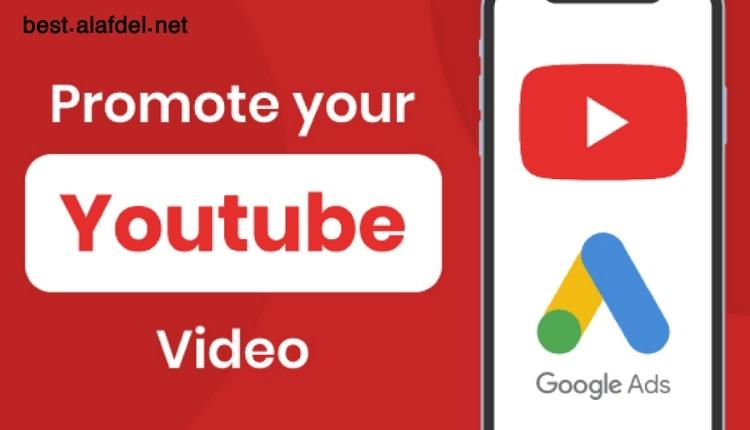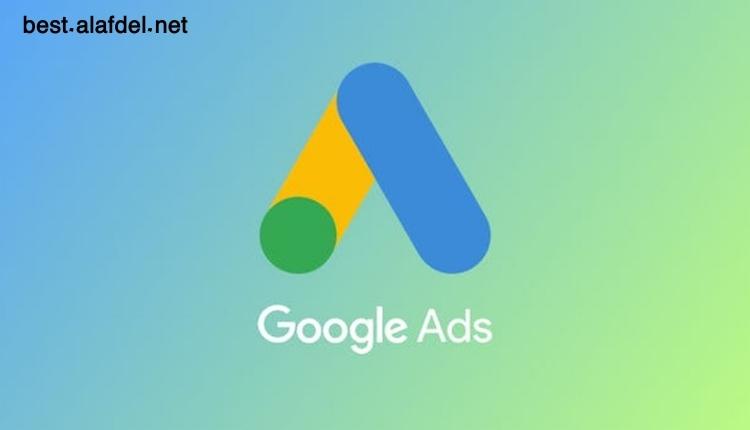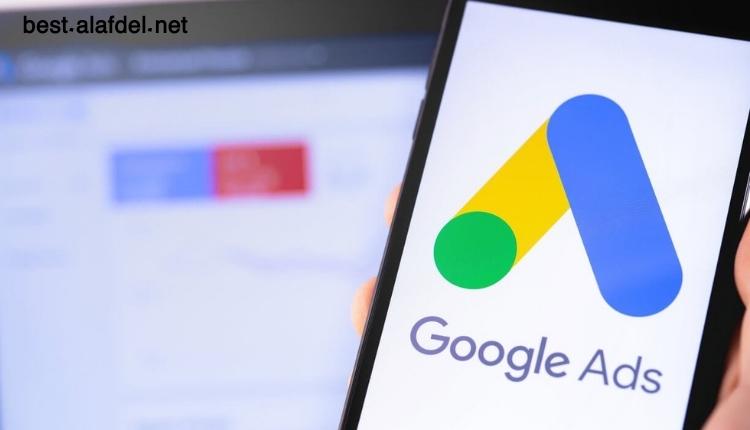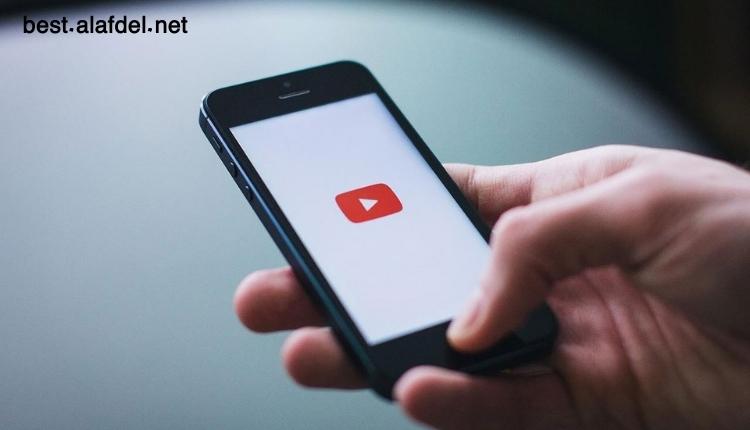How to Use Google Ads to Promote Your YouTube Video?
This article guides you on setting up Google Ads for YouTube channels, maximizing your advertising impact. Marketing success depends on many things

Creating a YouTube commercial is similar to crafting an advertisement for any other social media platform. However, precision is crucial as you risk wasting money without achieving satisfactory results or gaining exposure on this popular site. Managing advertising on YouTube is done through Google Ads, which can be confusing. This article will guide you through the necessary steps to set up Google Ads for your YouTube channels, helping you maximize the effectiveness of your YouTube advertising.
In the face of pressure, marketers have been searching for methods to measure the success of their campaigns and maximize their return on investment (ROI). Successful marketing strategies rely on reaching the right audience, creating a brand impact, and achieving favorable sales results. Reach ensures that the brand’s message reaches the appropriate individuals, while the brand effect raises awareness, generates product interest, and increases consumer satisfaction. Analyzing sales results enables companies to optimize their ROI.
What Are the Benefits of Using Google Ads on a YouTube Channel?
You might be curious about the advantages of using Google Ads for YouTube channels, and the answer is straightforward. Google Ads allows you to have precise control over where your ad appears, who sees it, and the duration of its display. Additionally, utilizing Google Analytics provides you with comprehensive data on the performance of your campaign, giving you the confidence that your investment is being used wisely. Launching and managing video ad campaigns on this platform is a simple process, and by doing so, you can attract more subscribers and viewers. While some YouTube users rely on basic tools to market their videos, they don’t hold a candle to the capabilities of Google Ads.
Google Ads for YouTube Channels, are they effective, if at all?

Google Ads is a highly effective tool for promoting YouTube channels, providing you with the means to create and manage video marketing campaigns. This opens up opportunities to attract new subscribers and expand your audience. You can leverage this platform to launch various types of video promotion campaigns, including:
- Channel promotion to reach audiences who haven’t subscribed using display ads.
- Commercials for specific videos.
- In-video advertisements that play either in real-time or after rewinding a video.
The versatility of Google Ads allows you to design customized campaigns that combine these features, enabling you to target specific audiences who are most likely to be interested in your content. For instance, if you own a gaming channel but want to attract viewers interested in culinary programs, you can create a tailored campaign that includes display ads for your gaming channel and video ads for your food-related content.
“Read Also: Not enjoying intercourse between spouses; Learn about the reasons and treatment”
Steps to using Google Ads to promote YouTube ads

The following are 3 essential steps to promote your YouTube ads using Google Ads:
Launch an AdWords ad campaign
YouTube channel growth can be achieved through AdWords video promotion, especially when the creator has a good understanding of their target audience and consistently produces high-quality, engaging content. AdWords advertising can provide your channel with the initial momentum it needs and can also contribute to organic growth. However, solely relying on advertisements to grow your channel is not enough. It is crucial to have excellent video content that resonates with your audience, and when paired with targeted ads, it can lead to significant results.
To get started with AdWords, you’ll need to create an AdWords account, which is not expensive if you don’t already have one. The next step is to link your AdWords and YouTube accounts. You can do this by accessing the Linked Accounts section in AdWords, clicking on YouTube after selecting the wrench-shaped symbol for Tools, Billing, and Settings. Then, follow the on-screen instructions to complete the linking process. This connection allows you to effectively promote your YouTube videos through AdWords and enhance your channel’s growth potential.
Connect your YouTube and AdWords accounts
Once you have set up your AdWords account, proceed to create a new campaign. To do this, follow these steps:
- Click on “Campaigns” in the left-hand menu.
Next, click on the plus symbol within the blue circle, which will bring up a drop-down menu.
From the drop-down menu, select “New Campaign.”
By following these simple steps, you can initiate a new AdWords campaign and start promoting your content effectively.
Launch an entirely new AdWords initiative at Google
From the campaign type menu that opens, select “Video.” At this point, you have the option to set no specific objective for your AdWords campaign, or you can choose between two distinct objectives:
Brand Awareness and Reach:** By selecting this option, your ad won’t be displayed in search results, but it will reach a wide audience at a low cost, ideal for increasing brand awareness. If you’re a vlogger aiming for more subscribers and viewers, making your channel more visible should be your focus. With this objective, your ad will appear in YouTube search results when users are seeking information about specific items or brands. To achieve this, it’s best to promote a product, tool, or service to a targeted audience.
The Brand Awareness and Reach campaign type in Google AdWords is designed to increase brand visibility and awareness. On the next page, you can customize your campaign’s spending limit and other settings. Create a distinct name for your campaign that stands out from others, and then plan your daily expenditure. Starting with a budget of $5 per day is a reasonable amount. The default setting, which is standard delivery, ensures that your ad runs continuously throughout the day. (The accelerated strategy may deplete your budget quickly.) In Google AdWords, label your campaign and set a budget accordingly.
“Read Also: website ideas“
Marketing in the Age of social media
As a marketer for a small company, attending multiple conferences each year may not be feasible due to budget constraints. To ensure your advertising appears only on appropriate sites, go to the Networks section and select the Video Partners option under the Display Network option. Your objective is to have your video advertisements displayed in YouTube search results, as that’s where your target audience is most likely to search for similar videos.
The key is to reach individuals when they are in the mindset of watching vlogs. Keep in mind that by excluding the Google Display Network from your ad rotation, you limit your campaign to a single bidding strategy, the highest possible price per view (CPV). However, if you include the Google Display Network, you gain access to another bidding technique, maximum cost per thousand impressions (CPM). As a vlogger, your primary concern should be view counts rather than first impressions. This way, your advertisements will be shown at times and places where they are most likely to reach new audiences. Focusing on view counts helps ensure your ads are displayed to the right audience, increasing the chances of attracting new viewers to your content.
Google AdWords campaign network configurations
To refine your target market, you can make adjustments to the ad’s language, location, and device settings. When creating an ad group in this campaign, you have the option to choose your target audience’s age and gender. By selecting a specific language in the Language drop-down menu, you can narrow your audience to English speakers. However, if your YouTube video has the potential to go viral in multiple languages or includes subtitles, choosing more languages can help you reach a broader audience.
The Location controls enable you to further narrow down your target audience based on their geographic location. For instance, if most of your vlog’s viewers reside in the United States, you may choose to market specifically to people in that country. You can also expand the targeted geographic area to include more than one country if desired. Conversely, you have the option to exclude certain countries or regions if necessary, focusing on places where the language you want to target is predominantly spoken. These adjustments can help you effectively reach and engage with your desired audience across various regions and languages.
“Read Also: startups“
Google AdWords locale and language preferences
If your ad is specifically tailored for iOS devices, you can control its visibility by adjusting the device settings accordingly. However, in most cases, device targeting might not be necessary unless you have a compelling reason to do so. While creating videos for iOS users may seem like a niche market, it’s essential to remember that there could be unexpected interest in your content from various audiences.
To manage the exposure of your ads effectively, you can employ frequency limiting. This allows you to set limits on views and impressions, preventing overexposure to the same audience. AdWords counts every ad impression, but for it to count as a view for frequency capping purposes, users must interact with your ad or watch your video for at least 30 seconds (or the entire video if it’s shorter than 30 seconds).
When budgeting for your campaign, it’s advisable to limit daily impressions to two (or five to ten per week) to maintain a balanced ad exposure. However, it’s important to note that the frequency capping technique may vary slightly if you’re remarketing to clients.
By implementing these strategies, you can ensure your ad campaigns reach the right audience at the appropriate frequency, optimizing the effectiveness of your YouTube video promotion.
Campaign frequency limits for Google AdWords

To expand the reach of your ad, you can utilize Content Exclusions (the standard content filter) to exclude specific categories of material and sensitive topics. While the default YouTube filter does a decent job, you can further customize the settings to ensure your video ad doesn’t appear in inappropriate contexts, including certain channels, videos, and mobile applications.
If you need stronger filtering for sensitive topics, you can adjust the settings as depicted in the provided picture. Additionally, if your digital content bears the DL-MA mark, the advertising will only go live after being vetted and deemed suitable for all users, such as in the case of documentaries.
A valuable strategy is to place ads alongside unlabeled content, which can boost their effectiveness. Furthermore, consider checking the boxes for live-streaming videos and games, as viewers are typically less focused on ads in these contexts. These adjustments to Content Exclusions can help you ensure that your ads are displayed in appropriate and relevant environments, maximizing their impact and engagement with the target audience.
“Read Also:Cryptocurrency risks“
Google AdWords campaign exclusion settings for restricted content
You have the option to adjust the ad schedule for views or have it rotated equally to prevent your budget from being depleted too quickly. Timing your advertisements to run during peak viewing hours can be beneficial if you know when your audience is most attentive. For instance, if your video receives more views on weekends but very few on Mondays, consider advertising your videos specifically on weekends rather than Mondays. Once you have finalized the campaign settings, you should set up ad groups within the campaign. This approach ensures that your ad campaign is well-organized and optimized for maximum impact.
Make Sense of Your Campaign’s Ad Groups

A single AdWords campaign can consist of multiple ad groups, allowing you to combine several YouTube videos with similar themes into one ad. To effectively implement the strategy described in this article and optimize your YouTube video promotion, it’s crucial to understand how ad groups fit into the overall campaign.
When creating ads, it’s essential to have each ad group focused on the same keywords or playlists on YouTube, which are referred to as “placements” since you place the ad on specific YouTube channels or videos. By utilizing the site’s targeting options, you can limit the audience who sees your video to those who have entered specific phrases in YouTube’s search bar or are currently watching particular YouTube channels.
The ad format you choose will determine how your ad appears on YouTube. Discovery ads will be suggested next to the video the viewer is watching, while in-stream ads will appear before the YouTube video the viewer intends to watch.
Suppose you want to implement a strategy that involves promoting content in both Hungarian and English on your channel. In that case, you should distribute video materials in both languages and create separate ad campaigns targeting the corresponding audiences for each language. Each campaign should have distinct ad groups that consider the target audience and ad type. In summary, your campaign should include the following ad groups:
Campaign outline for Google AdWords videos
To optimize the allocation of funds for each campaign, it’s essential to organize your advertising strategy effectively. Within each campaign, the advertisements continuously compete against each other, and only the most effective and timely ones will receive funding. For instance, you will be charged for an in-stream ad when a potential customer watches it, but no charges will apply if the viewer decides to skip the video. Similarly, you only pay for discovery ads when a user actively watches the ad.
When you have refined the targeting for your discovery advertising, you can seamlessly eliminate in-stream ads, which is a significant advantage of this setup. In-stream ads, while engaging, may not be as well-received by viewers, and avoiding them altogether can be beneficial. Discovery ads, on the other hand, typically receive more views and have the potential to draw in viewers if the headline and thumbnail are intriguing.
Utilizing discovery advertising offers several advantages, such as attracting highly engaged viewers to your YouTube channel and building trust with your audience through genuine content. By strategically utilizing the right ad formats and targeting, you can make the most of your allocated budget and achieve a high return on investment.
Initiate a new ad group for your campaign
Located below the campaign information, you will find the “Create Your Ad Group” section, where you can set up your first ad group. Choose a descriptive name that distinguishes this group from others within the campaign. Next, specify your highest possible CPV bid in the Bidding section and make any necessary adjustments for the most-viewed films.
Start your Google AdWords campaign by creating an ad group
To control your expenses and ensure you don’t exceed your budget when viewers click on your ad, set the highest possible cost-per-click (CPC) bid. For example, if you are willing to spend up to $0.10 per view, and your ad reaches 1,000 people per month resulting in views, you’ll have spent no more than $230.
Adjusting your bidding strategy allows you to increase the chances of your video ad appearing on YouTube’s most popular videos or channels. You can modify your bid by entering a percentage of your highest possible CPV offer. When your ad appears on popular YouTube content and gets clicked, you’ll pay $0.11.
In addition to bidding strategies, Google AdWords’ Demographics section provides you with the ability to select your target market based on various factors, including gender, age, marital status, and household income. This enables you to fine-tune your ad campaign and reach the most relevant audience for your video content.
Campaign demographics in Google AdWords
Analyze your YouTube Analytics to determine the most effective target audience options for your videos. The best approach is to tailor your targeting based on the context of your content. Pre-checked demographic variables can provide valuable insights into your audience, allowing you to focus on YouTube viewers with a long-term interest in or studying topics related to your material.
Alternatively, you can concentrate on targeting a specific interest group to promote your films effectively. Leveraging the Affinity choices can be highly beneficial, as it allows you to target people with common interests, which can result in better engagement and effectiveness for your ad campaign.
For optimal results, select technology and any relevant subcategories that align with your channel’s content, such as media & entertainment or lifestyles & hobbies. By focusing on a core group of internet users who are interested in shopping for PC parts, you can enhance the impact of your ad and effectively reach your target audience.
Google AdWords target audience configurations
You may utilize keywords, subjects, and placements to narrow the scope of your advertising’s reach (a YouTube channel or video). Pick one to launch your AdWords video ad campaign. You lose too much precision if you use one method to reach your audience.
Configuration of a Google AdWords campaign, including keywords, subjects, and placements
It would help if you started with placements to get your video advertising in front of the right people on YouTube. You may target his whole channel to reach individuals who watch your competitors’ videos.
Publish the commercial for your video
Once you have established the campaign and ad group parameters, you can add your promo videos to the mix. Remember to adhere to the AdWords advertising standards while creating your advertisements. To place your first ad, scroll down to the appropriate section in the AdWords dashboard.
Copy and paste the URL of a video from YouTube and then choose either the in-stream or discovery ad format. (Please note that this method is not like a bumper-sticker ad.)
Next, select a machine-generated image to use in your advertisement, and you will have the option to choose a thumbnail for the video. Provide a name and some relevant information for your ad. As you fill in the details, a mobile- and desktop-friendly ad preview will appear on the right, giving you a preview of how your ad will look.
Ensure not to change the ad’s default landing page, which should be set to the page where your video can be viewed. Finally, give your ad a name to identify it within your campaign effectively. By following these steps, your ad will be ready to be displayed to your target audience on YouTube.
Prepare AdWords campaign video content for uploading to YouTube
After the first ad is set up, you may build ad groups and add videos to each group. Open your campaign in the AdWords dashboard and click the blue + symbol to create a new group. Open the group to which you want to add an ad, and click the blue + symbol to see the ad creation choices.
Facilitating the Approval of Your Ad
Once ads are made, they take one business day to be approved (so be aware of weekends). The AdWords approval process aims to ensure that your ad’s meta-data, keywords, website and app URLs, and headlines meet Google’s standards, not just the ad itself. During the review process, your ads appear on certain sites but will be removed if rejected.
If your ad isn’t accepted, you’ll be notified and be able to see it marked as “not authorized” on your AdWords account dashboard. If you have issues throughout the approval process, your best choice is to call customer service. Click the question mark symbol (?) in the top right corner of your AdWords dashboard for contact information.
Contact Google for AdWords assistance
A helpful hint is to have your video ad play at the upload time. There won’t be thousands of people watching your brand-new video within the first few minutes, but there will be some, and the AdWords boost will help your video achieve greater organic reach via YouTube’s algorithm. If the video gains many views quickly, its organic reach will grow exponentially, allowing you to make the most of your advertising money. Using AdWords Analytics, the five most important ways to measure how well video ads are doing are:
To keep tabs on how well your advertisements are doing, go on over to the AdWords dashboard and keep an eye on the following ad analytics metrics:
- Views
Comment on this image: - Percentage of audience participation up to 75%
Engagement (Likes and Comments)
Check your ad group structure for duplicate keywords. Finally, have a look at the video material you’ve uploaded. The initial ten seconds of a video are crucial, including a call to action, such as asking viewers to like or subscribe to your channel.
That sums up our elementary instructional tutorial for making and promoting Google advertising on YouTube. If you use this technology, you and your business will get free branding on YouTube, regardless of whether viewers watch the ad. You should use the Google Ads integration if you have a YouTube channel.
